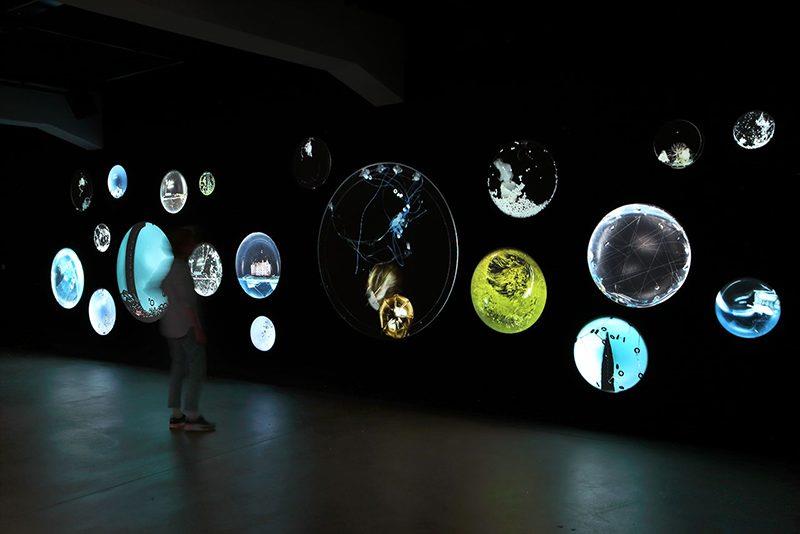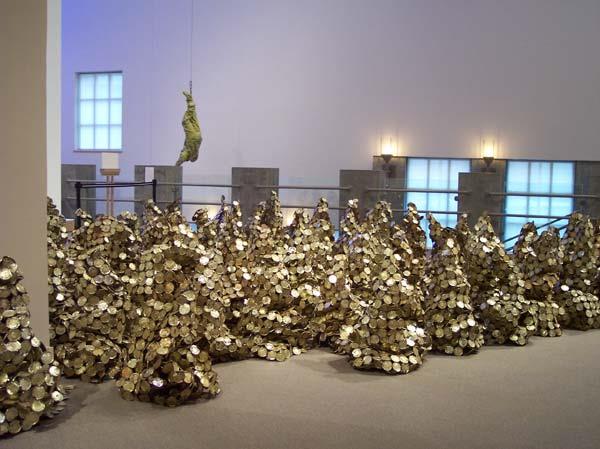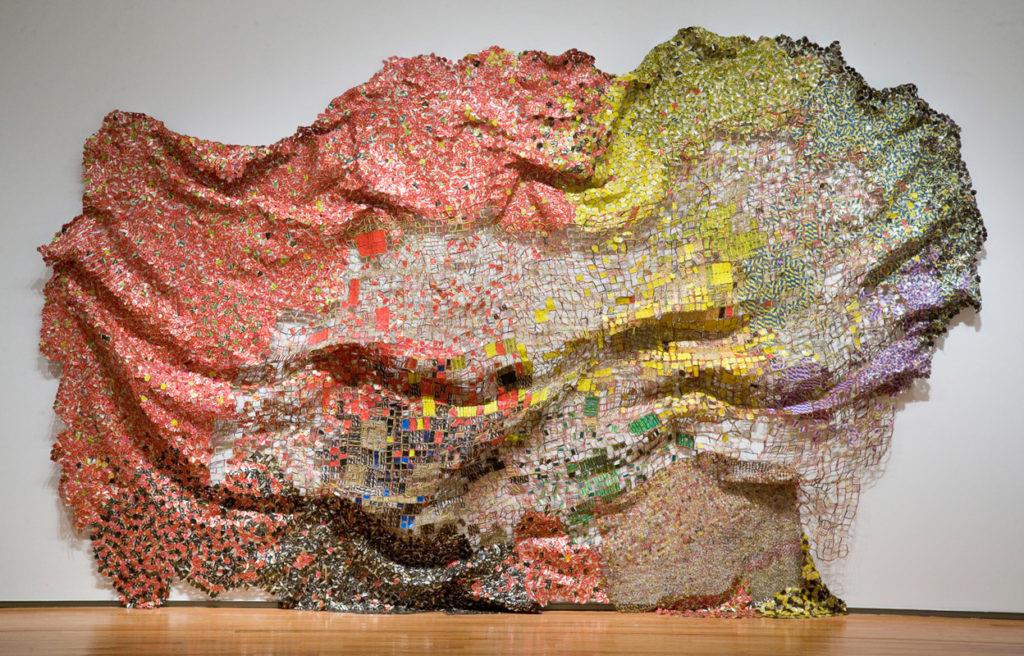(MENAFN- USA Art News)
In recent years, a significant transformation has taken place within the realm of contemporary art in the United States. This transformation, often referred to as the“Eco-Art Revolution,” marks an essential shift towards sustainable practices and environmental awareness. Artists are not only reflecting the urgency of climate change and ecological degradation in their work but are also taking active steps to engage with sustainable art methods. This article delves into the world of eco-friendly artists, highlighting their innovative approaches while emphasizing the importance of environmental art as a means of raising awareness and promoting ecological responsibility.
The Essense of Sustainable Art
Sustainable art, at its core, refers to artistic practices that prioritize environmental responsibility, ethical sourcing of materials, and minimal waste production. Unlike traditional art forms that may rely on non-renewable resources and contribute to environmental degradation, eco-art champions a more harmonious relationship between creativity and ecological conservation.
The eco-art movement is not just about the end product but also the processes employed. Artists are increasingly focusing on low-impact techniques, including the use of recycled materials, organic substances, and natural dyes. This shift in perspective not only challenges the conventional notions of beauty and art but also invites audiences to rethink their engagement with the material world.
Pioneers of Eco-Art: Innovators Leading the Charge

Cloud Cores, multichannel video installation, Agnes Meyer-Brandis
As the eco-art movement gains traction, several artists in the USA have emerged as pioneers, using their platforms to advocate for sustainability and environmental justice. These artists are not merely creating aesthetically pleasing works; they are serving as advocates for urgent ecological change.
Chris Jordan: Visualizing Consumption
One of the most recognized figures in the eco-art scene is Chris Jordan. Renowned for his strikingly beautiful yet profoundly disturbing imagery, Jordan captures the impact of consumer culture on the environment. His series,“Running the Numbers,” features large-scale photographs composed of thousands of objects to illustrate the staggering statistics related to waste and consumption-each piece rendering something invisible visible. For example, a portrait made from 200,000 plastic bottles illustrates the number thrown away every hour in America. Jordan's work challenges viewers to confront the realities of overconsumption while encouraging a more sustainable mindset.

Peak Project, 1999, Tin and copper wire
El Anatsui: Textiles of Transformation
Nigerian-born, Ghana-based artist El Anatsui is another beacon in the realm of sustainable art. Using discarded materials such as bottle caps and aluminum, Anatsui creates massive, tapestry-like installations that evoke both beauty and interconnectedness. His intricate designs illustrate how waste can be transformed into extraordinary art. Through his work, Anatsui not only comments on the environmental crisis but also celebrates cultural heritage and communal spirit. His method encourages viewers to reflect on the value of recycling and reusing materials, ultimately promoting a more sustainable lifestyle.
Agnes Meyer-Brandis: Exploring Climate Change
Agnes Meyer-Brandis uses her artistic practice to explore the implications of climate change, blending art with scientific inquiry. Through her projects, she encourages engagement with environmental themes, often unveiling narratives surrounding our relationship with nature. Her interdisciplinary approach, which includes lunar expeditions and space art, serves as a reminder of humanity's fragile connection to the Earth. Meyer-Brandis's participatory installations invite audiences to immerse themselves in environmental explorations, creating a dialogue around sustainability and planetary stewardship.

El Anatsui: Triumphant Scale
The Role of Community and Collaboration
The eco-art movement is not limited to individual artists; it is also characterized by community involvement and collaborative practices. Numerous organizations and collectives across the United States are working to promote sustainable art initiatives, fostering camaraderie among eco-friendly artists.
The EcoArt Network
The EcoArt Network, for example, is a collaborative platform that connects artists committed to ecological principles. By offering resources, workshops, and networking opportunities, this organization cultivates a supportive environment for eco-artists to share ideas and experiences. This collaborative spirit enhances the movement's focus on community engagement, raising awareness among diverse audiences about the importance of sustainability in both art and daily life.
Creative Placemaking
Another compelling aspect of the eco-art revolution is the rise of creative placemaking, where artists work in partnership with communities to enhance public spaces with environmental art. This approach not only beautifies neighborhoods but also emphasizes ecological stewardship. Projects that incorporate native flora, rain gardens, and installations made from reclaimed materials promote a sense of place, encouraging community members to engage with their environment more consciously.
The Impact of Eco-Art in Society
As the eco-art revolution continues to flourish, its impact transcends the art world and resonates through society. By challenging conventional perspectives and engaging audiences in thought-provoking conversations about sustainability, eco-artists are fostering a cultural shift towards environmental awareness.
Environmental art serves as a powerful medium for education, often addressing urgent issues such as climate change, habitat loss, and biodiversity decline. Through exhibitions, workshops, and community events, artists can stimulate discussions, inspiring audiences to adopt more sustainable practices in their daily lives.
Furthermore, as consumers increasingly seek out eco-friendly products and practices, the influence of sustainable art can extend to the marketplace. Collectors and patrons are becoming more conscious of the environmental implications of their purchases and are actively supporting artists who prioritize sustainability. This shift encourages a broader cultural embrace of eco-consciousness, forging pathways for innovative, environmentally-responsible practices in the art world.
A Call to Action
The Eco-Art Revolution is a powerful and transformative movement reshaping the landscape of American art. As artists engage with sustainable practices and recycled materials, they invite audiences to explore deeper questions about their relationship with nature and the impact of their choices on the environment. By fostering a culture of awareness and active participation, eco-art inspires individuals to embrace sustainability not just as a concept but as a way of life.
As we navigate the complexities of the climate crisis, the call for eco-friendly artists and sustainable art has never been more urgent. By supporting eco-art and championing these innovative creators, we can collectively contribute to a healthier planet and an enriched cultural dialogue surrounding environmental stewardship. The art world has the power to drive change-let us harness that potential and fuel the Eco-Art Revolution for a sustainable future.
MENAFN24112024005694012507ID1108920876
Legal Disclaimer:
MENAFN provides the information “as is” without warranty of any kind. We do not accept any responsibility or liability for the accuracy, content, images, videos, licenses, completeness, legality, or reliability of the information contained in this article. If you have any complaints or copyright issues related to this article, kindly contact the provider above.